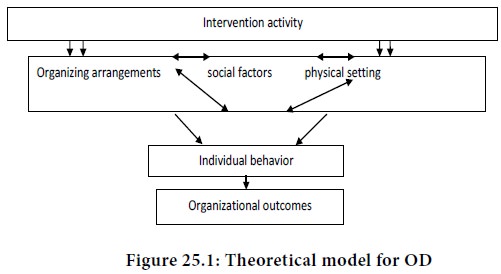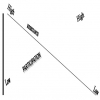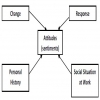Management Concepts & Organisational Behaviour - Organisational Development (OD)
Approaches to OD
Posted On :

OD development can be traced back to the application of behavioral science and social psychology and to subsequent efforts to apply laboratory training survey-feedback insights into social system.
Approaches to OD
OD development can be traced back to the application of behavioral science and social psychology and to subsequent efforts to apply laboratory training survey-feedback insights into social system. Krut Lewin was instrumental in both the approaches namely laboratory training and survey feedback.
Two important ways of theorizing for OD according to Burke and Litwin, are organizational functioning and organizational change. To them both transformational and transactional factors affect motivation which in turn affects performance. Transformational changes occurring in response to external environment directly affects organizational mission and strategy leadership and culture. In turn, transactional factors such as structure, system, management practices and climate are affected.
A theoretical model for planned organization change and development is presented below:

This
model is predictive. The three implications of this model are:
1. As a starting point change agents should focus on systematic change in organizational work setting and on individual behavior change as a key mediator associated with organizational outcome.
2. The results of technological intervention in organizational setting indicates negative individual behavior change need not necessarily lead to negative organizational outcome change.
OD development can be traced back to the application of behavioral science and social psychology and to subsequent efforts to apply laboratory training survey-feedback insights into social system. Krut Lewin was instrumental in both the approaches namely laboratory training and survey feedback.
Two important ways of theorizing for OD according to Burke and Litwin, are organizational functioning and organizational change. To them both transformational and transactional factors affect motivation which in turn affects performance. Transformational changes occurring in response to external environment directly affects organizational mission and strategy leadership and culture. In turn, transactional factors such as structure, system, management practices and climate are affected.
A theoretical model for planned organization change and development is presented below:

1. As a starting point change agents should focus on systematic change in organizational work setting and on individual behavior change as a key mediator associated with organizational outcome.
2. The results of technological intervention in organizational setting indicates negative individual behavior change need not necessarily lead to negative organizational outcome change.
3. This theory provides a better
framework of choosing interventions than the case where intervention is decided
by change agent’s preferences, values and styles.
Potential areas of OD Intervention:
Areas where OD Interventions help include people side of the organizations, the technical and job related
aspects and structural aspects.
People side of the organization: OD interventions under people side encompass a)interpersonal or individual level -personnel counseling and career planning; b) dyadic (two-person) level solving problems in interpersonal communication and in superior sub-ordinate relationship; c) group level- helping people to get along with each other and clarifying perceived incongruencies in goals; and d) family level –helping couples to get adjusted to new transfers and relocations, and conducting work-shops for dual career family members to better manage the work-family interfaces. OD techniques used to address “people concerns” are sensitivity training, transactional analysis, process consultation, third-party peacemaking, team building, individual counseling, life and career planning, role clarification, and workshops.
People side of the organization: OD interventions under people side encompass a)interpersonal or individual level -personnel counseling and career planning; b) dyadic (two-person) level solving problems in interpersonal communication and in superior sub-ordinate relationship; c) group level- helping people to get along with each other and clarifying perceived incongruencies in goals; and d) family level –helping couples to get adjusted to new transfers and relocations, and conducting work-shops for dual career family members to better manage the work-family interfaces. OD techniques used to address “people concerns” are sensitivity training, transactional analysis, process consultation, third-party peacemaking, team building, individual counseling, life and career planning, role clarification, and workshops.
Technical
and job related aspects: Areas of OD intervention include
work flow inter-dependencies, job
evaluation and job redesigning and the like. Some of the techniques that come
handy are socio-technical system analysis, flexible production, job evaluation
techniques and role analysis techniques (JET and RAT).
Structural aspects: They include interventions to change the physical settings, work group structuring as autonomous (self-managed) work groups, changes in the extent or formalization and control etc. Other techniques used to increase the effectiveness of the organization are the management grid and Likert’s system in techniques.
Structural aspects: They include interventions to change the physical settings, work group structuring as autonomous (self-managed) work groups, changes in the extent or formalization and control etc. Other techniques used to increase the effectiveness of the organization are the management grid and Likert’s system in techniques.
Tags : Management Concepts & Organisational Behaviour - Organisational Development (OD)
Last 30 days 616 views














